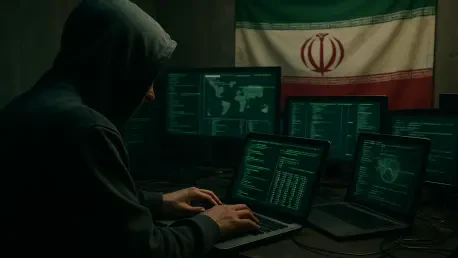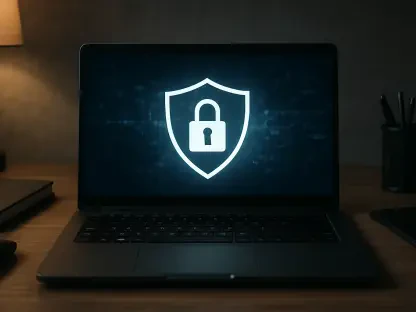What happens when a 12-day clash between nations ignites not just with missiles and gunfire, but with a parallel storm of digital destruction that reshapes the very concept of conflict? During a heated conflict between Iran and Israel earlier this summer, pro-Iran hacking groups unleashed a wave of cyber operations that mirrored the intensity of physical warfare. This seamless blend of online attacks and real-world battles signals a new era of conflict, where a breached server can be as devastating as a bombed outpost, challenging the very notion of what constitutes a battlefield in 2025.
The significance of this development cannot be overstated. As geopolitical tensions spill into cyberspace, the actions of these hackers reveal a troubling reality: digital warfare is no longer a secondary front but an integral part of modern conflict. Governments, corporations, and even individuals find themselves vulnerable to attacks that can cripple infrastructure or manipulate public perception overnight. This story uncovers how pro-Iran cyber warriors are redefining warfare, why this hybrid approach poses a global threat, and what can be done to counter it.
When Digital Strikes Parallel Physical Combat
During the recent 12-day escalation between Iran and Israel, the digital realm became a mirror to the chaos on the ground. Pro-Iran hacking groups launched a relentless series of cyber operations that matched the ferocity of kinetic strikes, targeting everything from critical infrastructure to public sentiment. This wasn’t merely opportunistic hacking; it was a calculated effort to extend the battlefield beyond physical borders into the intangible expanse of cyberspace.
The impact of such synchronized attacks is profound, as they amplify the disruption caused by traditional warfare. While bombs may destroy buildings, cyber strikes can paralyze entire systems, from power grids to communication networks, often with less immediate visibility but equal devastation. This fusion of tactics showcases a chilling evolution, where defending against an enemy requires vigilance on two fronts simultaneously, with no clear line separating the virtual from the real.
The stakes are evident in the sheer scale of these operations, which unfolded in real-time alongside military actions. Analysis of over 250,000 Telegram messages reveals a coordinated strategy, with digital assaults designed to support broader war objectives. This parallel warfare underscores a critical shift: nations and organizations must now prepare for conflicts that strike with equal force through code and combat.
Why Cyber-Kinetic Warfare Demands Global Attention
The convergence of cyber and kinetic warfare is not a localized issue but a worldwide concern that affects diverse sectors. As pro-Iran hackers ramped up their efforts during the brief but intense conflict with Israel, their actions demonstrated how digital attacks can escalate geopolitical friction far beyond the immediate theater of war. From disrupting essential services to sowing discord through misinformation, these campaigns expose the fragility of an interconnected global landscape.
No entity is immune to this threat, whether a government agency, a multinational corporation, or an ordinary citizen. The ripple effects of a single cyber breach can cascade across borders, impacting economies and security on a massive scale. For instance, when infrastructure is targeted, the fallout—such as power outages or data leaks—can destabilize entire regions, making this hybrid warfare a pressing issue for international stability.
Moreover, the involvement of state-sponsored actors alongside ideologically driven hacktivists adds layers of complexity to the problem. This mix of players, each with varying agendas, creates a borderless battlefield where traditional rules of engagement no longer apply. As digital tools become weapons of war, the urgency to address this dual threat grows, demanding a unified response from nations and industries alike.
Dissecting the Arsenal of Pro-Iran Cyber Operatives
The cyber campaigns executed by pro-Iran groups during the conflict were diverse and meticulously aligned with broader strategic goals. Their tactics spanned a wide range, including intelligence gathering through data theft, with entities like the Cyber Fattah Team targeting high-profile events such as the Saudi Games to leak sensitive personal information. These breaches were not random but aimed at creating chaos and undermining trust in targeted systems.
Beyond data theft, psychological warfare played a pivotal role, with propaganda efforts spreading across 178 Telegram groups to shape narratives and influence morale. These messages often leveraged emotionally charged events, such as the Hamas attack on Israel on October 7, 2023, to amplify their impact. Meanwhile, direct cyber assaults like Distributed Denial of Service (DDoS) attacks, website defacements, and phishing schemes targeted vulnerabilities, with state-aligned groups like Tortoiseshell deploying sophisticated tools like Evilginx against Hebrew-speaking individuals.
Adding to the complexity, financially motivated actors like the Tunisian Maskers Cyber Force exploited the conflict for profit, focusing on data exfiltration and selling zero-day vulnerabilities. This spectrum of motivations—from ideological to monetary—highlights the varied nature of threats, ranging from crude hacktivist disruptions to precision strikes by operatives tied to Iran’s Islamic Revolutionary Guard Corps. Such diversity in approach and intent makes predicting and countering these attacks a formidable challenge.
Insights from the Digital Battleground
Voices from the cybersecurity frontline paint a vivid picture of this evolving threat. A comprehensive analysis notes that “the cyber domain now serves as a critical extension of kinetic warfare, with digital strikes magnifying physical consequences.” This observation underscores the seamless integration of online and offline conflict, where a single breach can have cascading effects on real-world operations and public safety.
Experts also highlight the difficulty in discerning the origins and motivations behind these attacks. A seasoned cybersecurity analyst remarked, “Pinpointing whether a group is driven by ideology, financial gain, or state directives is essential to crafting effective defenses.” This distinction is crucial, as state-sponsored actors often wield advanced capabilities, while loosely affiliated hacktivists may rely on simpler, yet still disruptive, methods that exploit human error during times of crisis.
Real-world accounts from targeted organizations further reveal the human cost of these cyber campaigns. Employees, caught off-guard by phishing attempts that capitalized on conflict-related narratives, often inadvertently exposed sensitive data. These incidents emphasize the power of social engineering as a weapon, particularly when tensions run high, illustrating how personal vulnerabilities can become strategic liabilities in hybrid warfare.
Fortifying Defenses Against a Two-Pronged Threat
As the lines between cyber and kinetic warfare blur, building robust defenses becomes imperative for organizations navigating this dual-front conflict. One critical step is enhancing employee awareness through targeted training on recognizing phishing attempts and social engineering tactics, especially those exploiting emotionally charged themes tied to geopolitical events. Educated staff can serve as the first line of defense against insidious digital threats.
Collaboration with security vendors is equally vital to assess specific risks and vulnerabilities, particularly for entities in high-target industries or regions. Additionally, strengthening infrastructure protections against common attack vectors like DDoS disruptions, malware such as RemCosRAT, and web exploits is essential. Monitoring platforms like Telegram for signs of coordinated campaigns can also provide early warnings, enabling proactive rather than reactive responses to emerging threats.
Ultimately, resilience in this new era of warfare requires a mindset shift, recognizing that digital assaults can be as crippling as physical ones. By integrating these strategies, organizations can better safeguard against the multifaceted tactics employed by pro-Iran hackers and other cyber adversaries. Preparedness on both fronts—cyber and kinetic—ensures a stronger stance against disruptions that transcend traditional battle lines.
Reflecting on a New Era of Conflict
Looking back, the 12-day conflict between Iran and Israel earlier this summer marked a turning point in how warfare is perceived and conducted. The deliberate integration of cyber operations with kinetic actions by pro-Iran hacking groups exposed a landscape where digital tools wielded as much power as conventional weapons. This hybrid approach left an indelible mark on global security discussions, highlighting vulnerabilities that spanned servers and streets alike.
The lessons drawn from this episode pushed forward a critical dialogue on bolstering defenses for the future. Nations and organizations began to prioritize integrated strategies that addressed both online and offline threats, recognizing that ignoring one risked catastrophic failure in the other. Moving ahead, investing in advanced threat intelligence and fostering international cooperation emerged as key steps to mitigate the impact of such dual-front conflicts.
Beyond immediate tactics, a broader commitment to cybersecurity education and policy reform stood out as essential for long-term stability. As the dust settled, the focus shifted toward building frameworks that could adapt to the evolving nature of warfare, ensuring that the next clash—whenever it might occur—would meet a more fortified and united global response.









